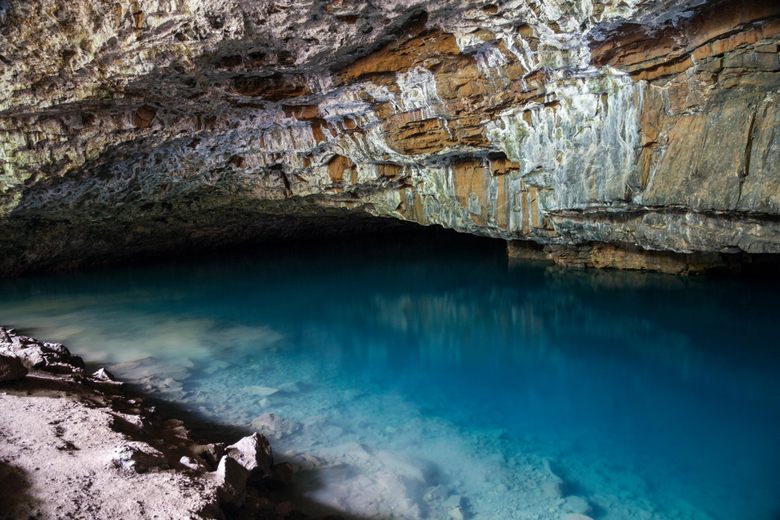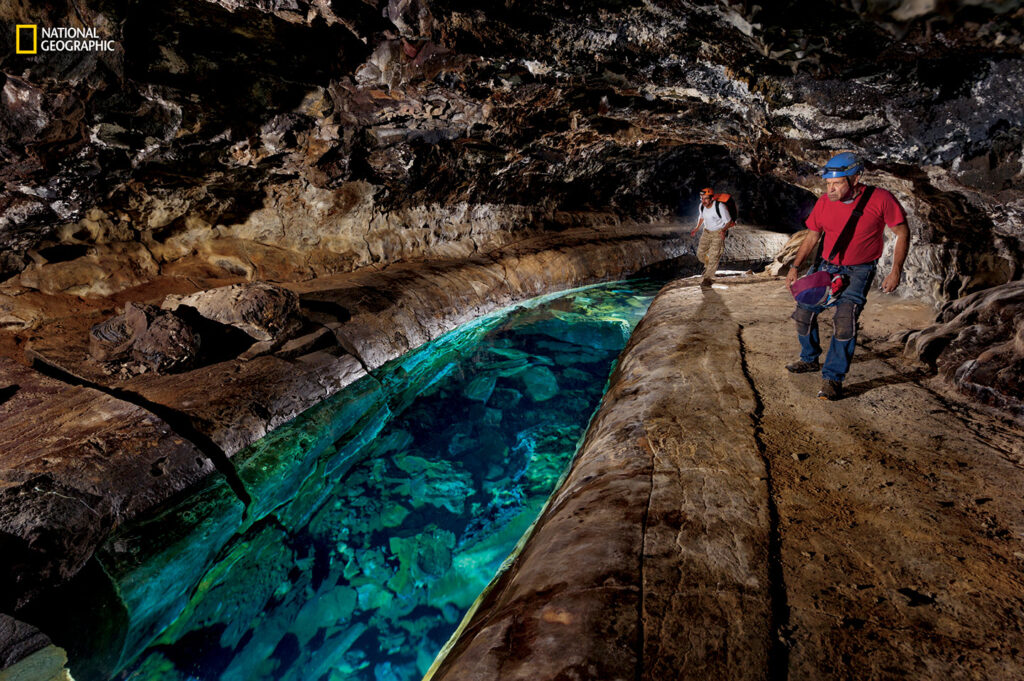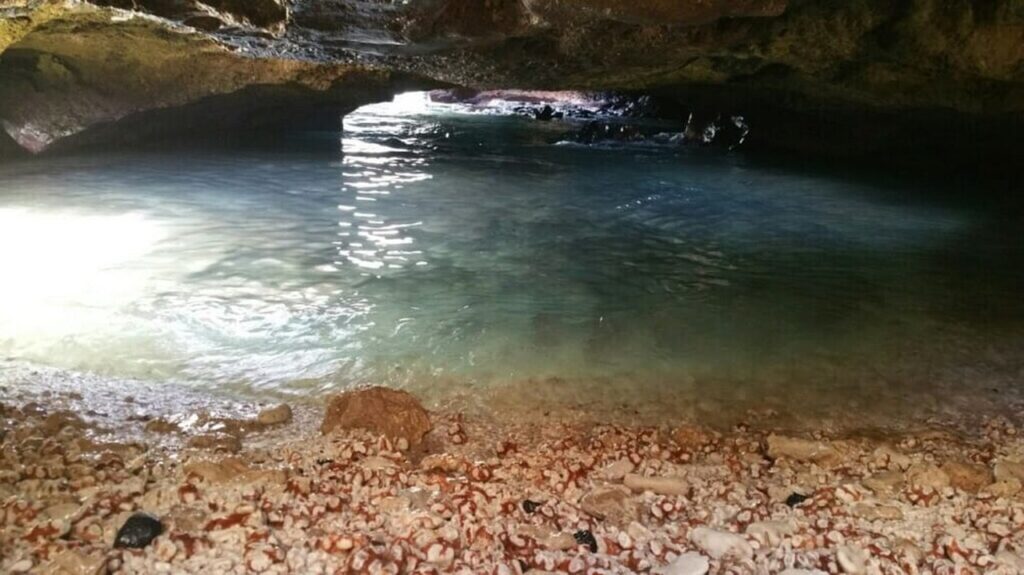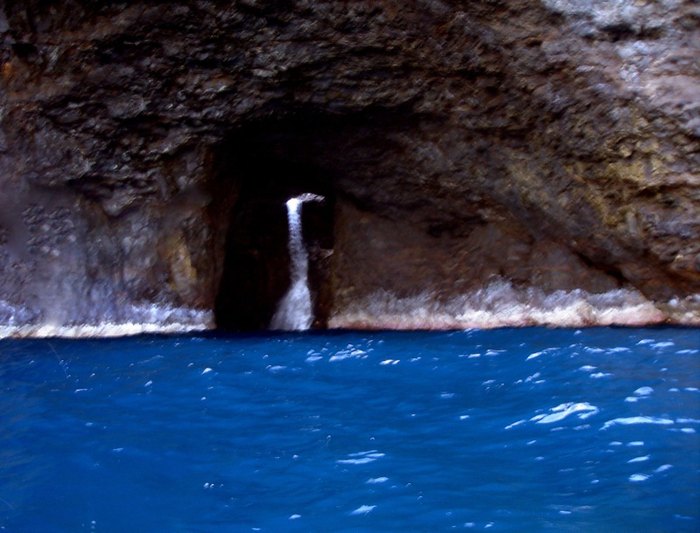Imagine diving into the crystal-clear waters of Hawaii, surrounded by vibrant coral reefs and tropical marine life. As you descend deeper, a mysterious world awaits you – the hidden wonders of the underwater caves of Hawaii. These captivating caves offer a unique and exhilarating experience, allowing you to immerse yourself in the awe-inspiring beauty of nature’s underground kingdom. From intricate rock formations to stunning bioluminescent creatures, each cave holds its own secrets waiting to be discovered. Whether you are an experienced diver or a curious adventurer, exploring the underwater caves of Hawaii is an unforgettable journey that will leave you in awe of the breathtaking wonders that lie beneath the surface.
Overview
Hawaii’s underwater caves hold a captivating allure and an air of mystery that beckons adventurers from around the world. These mesmerizing natural formations showcase the rich geological history of the islands, providing a glimpse into the majestic forces that have shaped their landscapes. From the formation processes to the diverse ecosystems within, the exploration of underwater caves is not only thrilling but also crucial for scientific research and conservation efforts. In this article, we will delve into the fascinating world of Hawaii’s underwater caves, discussing their formation, the different types of caves, the unique flora and fauna they harbor, the dangers and challenges of cave diving, famous cave destinations, exploration techniques and tools, conservation and preservation efforts, thrilling cave stories and expeditions, as well as the future prospects and discoveries that await those intrepid enough to delve into the depths.
Introduction to Underwater Caves
Underwater caves are captivating natural wonders formed through a combination of geological processes and the erosive power of water. These hidden marvels extend beneath the ocean’s surface, holding secrets that have yet to be fully unveiled. Hawaii, with its volcanic origins and dramatic coastal landscapes, boasts a wealth of underwater caves waiting to be explored. These caves provide a thrilling and otherworldly experience for divers and scientists alike, offering a glimpse into a hidden realm beneath the waves.

The Allure and Mystery of Hawaii’s Underwater Caves
The allure of Hawaii’s underwater caves lies in their breathtaking beauty and enigmatic nature. As you dive into these submerged caverns, you find yourself surrounded by an ethereal world filled with mesmerizing rock formations, intricate passageways, and vibrant marine life. The mysterious darkness and limited visibility within these caves intensify the sense of adventure, sparking a curiosity to uncover their secrets. Each cave holds a unique story, waiting to be unraveled by those daring enough to explore its depths.
Importance of Cave Exploration
Exploring underwater caves not only satisfies our innate sense of curiosity but also plays a crucial role in scientific research and conservation efforts. The geological formations found within these caves offer valuable insights into the earth’s history and the forces that have shaped it. By studying the flora and fauna thriving in these cave ecosystems, scientists can further understand the adaptations and survival strategies of organisms in extreme environments. Additionally, exploration allows for the identification and conservation of endangered species that call these caves home.

Formation of Underwater Caves
Geological Processes Shaping Underwater Caves
Underwater caves are primarily formed through the interplay of geological processes and the erosive power of water. Over thousands of years, various factors such as volcanic activity, erosion, and water flow work together to create these captivating formations. Understanding the formation processes provides valuable context for comprehending the unique characteristics of each cave.
Volcanic Activity and Lava Tube Formation
Hawaii’s volcanic origins have given rise to a significant number of underwater caves, particularly in coastal areas. Volcanic activity, such as the eruption of lava into the ocean, can create lava tubes. These tubes form when the outer layer of molten lava cools and solidifies, creating a conduit for the liquid lava to flow through. As the lava progresses, it leaves behind long, hollow tunnels that extend beneath the water, resulting in lava tube caves.
Erosion and Water Flow Creating Cave Structures
The erosive power of water plays a vital role in the formation of underwater caves. Over time, waves and currents erode the coastlines, carving out recesses in the rock formations. As the water continues to flow and erode, these recesses can develop into cave systems. Water flow provides a constant force that shapes the caves, creating unique structures and passageways over thousands of years.
Types of Underwater Caves
Hawaii is home to various types of underwater caves, each possessing distinct features that make them a marvel to explore. Understanding the different types of caves allows divers and scientists to appreciate the diversity of these subterranean landscapes.
Caverns
Caverns are large, spacious underwater caves typically characterized by a single or multiple entrances. These caves often boast significant vertical dimensions, with towering ceilings and expansive chambers. Caverns provide divers with ample space to navigate, explore, and appreciate the grandeur of the underwater world.
Lava Tubes
Lava tubes, as mentioned earlier, are caves formed through volcanic activity. They are long, tubular structures that extend underneath the water and are often remnants of ancient lava flows. Lava tube caves can vary in size, ranging from narrow passageways to extensive chambers, offering diverse exploration opportunities.
Sea Caves
Sea caves are formed through erosion by the relentless power of the ocean. These caves are created by the constant battering of waves against the coastline, gradually wearing away at the rocks. Sea caves often possess intriguing shapes and unique features, such as arches and tunnels, making them particularly alluring for adventurers seeking natural wonders.
Anchialine Caves
Anchialine caves are a unique type of cave formation commonly found in coastal areas. They are typically flooded sinkholes or vertical shafts that connect to the ocean. Anchialine caves often contain a mix of fresh and saltwater, creating a unique brackish environment. These caves are renowned for their diverse ecosystems and provide invaluable scientific insights into the intricate interplay between terrestrial and marine environments.

Cave Fauna and Flora
The unique ecosystems within underwater caves harbor an array of flora and fauna that have adapted to survive in the challenging conditions of these environments. The absence of sunlight and limited sources of nutrients create a highly specialized ecosystem, giving rise to organisms with remarkable adaptations.
Unique Ecosystems within Underwater Caves
Underwater caves form isolated ecosystems that differ significantly from their surrounding marine environments. The lack of direct sunlight and limited nutrient supply shape the ecology within these caves. Despite the challenging conditions, cave ecosystems thrive due to various biological processes, creating interconnected food chains and intricate symbiotic relationships.
Adaptations of Organisms to the Cave Environment
The organisms living within underwater caves have evolved a range of adaptations to survive in the absence of sunlight and limited resources. Many cave-dwelling species have lost pigmentation, resulting in pale or translucent bodies. Some animals, such as blind cavefish, have developed special sensory organs or heightened senses to navigate and locate food in the darkness. Similarly, certain plants have adapted to the low light levels by growing elongated stems or leaves to reach for available sunlight.
Endangered Species and Conservation Efforts
Underwater caves often serve as sanctuaries for unique and endangered species. These fragile ecosystems require special attention and conservation efforts to preserve their delicate balance. Collaborative endeavors between scientists, divers, and local communities are crucial for identifying and protecting these vulnerable species. Conservation measures can include implementing regulations and restrictions on cave diving, raising awareness through education programs, and conducting scientific studies to assess the impacts of human activity on cave ecosystems.
Dangers and Challenges of Cave Diving
Cave diving is an exhilarating yet inherently risky activity that requires specialized training and equipment. The unique environment of underwater caves presents numerous challenges that divers must overcome to explore these hidden realms safely.
Limited Visibility and Darkness
One of the most significant challenges of cave diving is the limited visibility and total darkness encountered within the caves. Without a direct source of light, divers rely on specialized equipment to navigate and ensure their safety. The darkness can disorient even the most experienced divers, making navigation a considerable challenge.
Navigation Difficulties
Navigating through the intricate passageways of underwater caves can be a daunting task. The absence of natural light, combined with the complex, labyrinth-like structures, can lead to disorientation and confusion. Proper training and experience are essential to develop proficient navigation skills, including the use of underwater mapping techniques and markers to ensure a safe return to the surface.
Underwater Currents and Surge
Underwater caves are often subject to strong currents and surges, posing additional risks to divers. These water movements can push divers off course, making it challenging to maintain control and balance. Understanding the dynamics of underwater currents and surge is crucial for planning dives and ensuring divers’ safety.
Safety Precautions and Equipment
Due to the inherent dangers of cave diving, strict safety precautions and specialized equipment are essential. Dive planning, gas management, and emergency protocols are critical aspects that divers must adhere to. Additionally, specialized equipment such as underwater lights, reels, and redundant gas supply systems are necessary to navigate safely while exploring underwater caves.

Famous Underwater Caves in Hawaii
Hawaii boasts several renowned underwater caves that enthrall divers with their beauty and intrigue. These remarkable destinations offer a glimpse into the hidden depths of the ocean, showcasing the mesmerizing formations and diverse marine life that inhabit these caves.
Kaneohe Bay Caves
Located on the windward side of Oahu, Kaneohe Bay is home to a series of stunning underwater caves. These caves, formed by volcanic activity, offer divers an opportunity to explore intricate lava tube formations and witness the vibrant marine life that flourishes within their depths.
Golden Arches Cave
Situated off the coast of Kona, Golden Arches Cave is a breathtaking underwater cave known for its stunning rock formations and abundant marine life. The cave gets its name from the golden color that illuminates the chamber due to sunlight filtering through the surface.
Makena Landing Cave
Nestled along Maui’s scenic coastline, Makena Landing Cave is a captivating sea cave that captivates divers with its rugged beauty. This cave is renowned for its dramatic entrances, hidden grottoes, and crystal-clear waters, offering a truly memorable underwater experience.
Blue Room Cave
Located on the north shore of Kauai, Blue Room Cave is an enchanting sea cave that delights divers with its luminescent blue glow. This otherworldly phenomenon is created by sunlight filtering through the water and reflecting off the limestone walls, resulting in an ethereal blue illumination.
Molokai Sea Caves
Molokai is famed for its intricate network of sea caves, offering divers a unique opportunity to explore a diverse range of cave formations. These caves showcase the raw beauty of Hawaii’s coastal landscapes, with arches, tunnels, and hidden caverns waiting to be discovered.
Exploration Techniques and Tools
Exploring underwater caves requires specialized training, equipment, and techniques to ensure safe and effective exploration. Advanced diving certifications, combined with cutting-edge technology, assist divers in navigating these complex environments.
Cave Diving Certifications and Training
Before attempting underwater cave exploration, obtaining specialized cave diving certifications is essential. These courses cover advanced diving techniques, navigation skills, emergency protocols, and familiarity with the specific risks associated with cave diving. Proper training ensures that divers possess the necessary knowledge and skills to maneuver safely through underwater caves.
Underwater Mapping Technology
Underwater mapping technology plays a vital role in cave exploration. By accurately mapping cave systems, divers can navigate with greater ease and safety. Technological advancements, such as underwater sonar mapping and three-dimensional modeling, allow for detailed cave mapping, contributing to scientific research and assisting in cave conservation efforts.
Specialized Diving Equipment
Cave divers rely on specialized equipment to ensure their safety and enable efficient exploration. This includes underwater lights to illuminate the darkness, reels and lines for navigating through passageways, and redundant gas supply systems to prevent running out of air. Each piece of equipment is carefully selected and maintained to withstand the challenges of cave diving.
Communication Devices for Cave Exploration
Communication devices are crucial for maintaining contact and safety during underwater cave exploration. Divers utilize devices such as underwater communication systems and handheld transceivers to stay connected with their dive partners and relay any necessary information. These devices facilitate coordination and enhance safety during cave dives.

Conservation and Preservation Efforts
While exploring underwater caves provides a unique and exhilarating experience, it is vital to promote responsible conservation and preservation efforts to protect these delicate ecosystems from harm caused by human activity.
Environmental Impact of Human Activity
Human activity, including excessive diving, can have a detrimental impact on underwater cave ecosystems. Irresponsible behavior, such as touching or disturbing delicate formations, can disrupt the fragile balance within these caves. It is crucial to raise awareness about the potential environmental impact and encourage responsible diving practices.
Regulations and Restrictions
Implementing regulations and restrictions on cave diving helps safeguard the delicate ecosystems found within underwater caves. By establishing guidelines on access, equipment usage, and dive practices, authorities can control the number of divers visiting these caves, minimizing potential damage and disturbances.
Collaboration with Local Communities
Collaboration with local communities is essential for successful conservation and preservation efforts. Engaging with communities that rely on cave ecosystems for their livelihoods fosters a sense of ownership and responsibility. It provides opportunities for education and awareness campaigns while ensuring the sustainable use and protection of underwater caves for future generations.
Educational Programs and Awareness Campaigns
Educational programs and awareness campaigns play a critical role in promoting responsible cave diving and conservation. By educating divers and the general public about the fragile nature of underwater cave ecosystems, their unique biodiversity, and the importance of sustainable practices, we can foster a collective commitment to preserve and protect these incredible natural treasures.
Thrilling Cave Stories and Expeditions
The exploration of underwater caves has given rise to numerous thrilling stories and expeditions, captivating the imaginations of adventurers worldwide. Here are a few extraordinary tales that demonstrate the allure, excitement, and challenges of diving into the depths.
Exploring the Depths of Lehua’s Cave
Lehua’s Cave, located near the island of Niihau, is known for its deep, dark passageways and awe-inspiring beauty. One daring expedition captivated the diving community as a team of experienced cave divers ventured further into the unknown. This expedition led to the discovery of a previously unexplored chamber adorned with rare limestone formations, making it a truly unforgettable dive.
Diving into the Secrets of Pele’s Well
Venturing off the coast of the Big Island, divers have long been intrigued by the legend surrounding Pele’s Well. This underwater cave is said to be the home of the Hawaiian goddess of fire and volcanoes, Pele. Many divers have undertaken expeditions deep into the cave to pay homage to Pele and catch a glimpse of the mystical wonders hidden within.
The Underwater Labyrinth of Nohoch Nah Chich
In the depths of the Yucatan Peninsula in Mexico lies Nohoch Nah Chich, an expansive underwater cave system that stretches for miles. This intricate labyrinth of underwater passages attracts explorers from around the world. The sheer scale and complexity of the cave network make it a challenging yet rewarding expedition for those eager to uncover its secrets.
Future Prospects and Discoveries
Despite numerous explorations, there are still vast unexplored areas within Hawaii’s underwater caves, holding the potential for hidden treasures and remarkable scientific discoveries. Advancements in technology and scientific research offer exciting prospects for the future of underwater cave exploration.
Unexplored Areas and Potential Hidden Treasures
There are countless unexplored areas within Hawaii’s underwater caves, awaiting the discovery of hidden treasures. As divers continue to venture into the depths, they may stumble upon previously undiscovered chambers, awe-inspiring rock formations, or even archaeological sites. Each dive could hold the promise of uncovering a new chapter in the story of Hawaii’s underwater world.
Scientific Research in Underwater Cave Ecosystems
The exploration of underwater caves facilitates valuable scientific research, shedding light on the adaptations, ecology, and interconnectedness of cave-dwelling organisms. Future research endeavors may reveal groundbreaking insights into how these fragile ecosystems function and how they can be preserved. Scientific exploration holds the potential to unlock vital knowledge to benefit not only underwater cave ecosystems but also the broader field of ecological research.
Emerging Technologies for Exploration
As technology continues to advance, new tools and methodologies are being developed to enhance the exploration of underwater caves. From improved underwater mapping techniques to advanced diving equipment, these emerging technologies hold great promise in facilitating safer and more efficient cave exploration. By embracing these innovations, explorers and scientists can delve deeper into the mysteries of Hawaii’s underwater caves.
In Conclusion
Hawaii’s underwater caves enthral divers with their captivating beauty and mysterious nature. From their formation through geological processes to the unique flora and fauna that call them home, exploring these hidden wonders offers a fascinating glimpse into a hidden world beneath the waves. However, the allure of underwater caves comes with inherent dangers and challenges that require specialized training and equipment. Conservation and preservation efforts must be prioritized to protect and sustain these delicate ecosystems. Through responsible exploration, education, and scientific research, we can ensure that future generations have the opportunity to immerse themselves in the enchanting depths of Hawaii’s underwater caves while preserving their fragile beauty for years to come.
